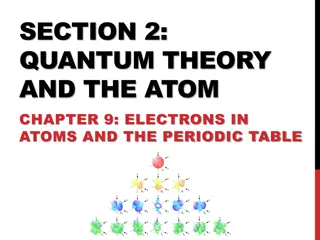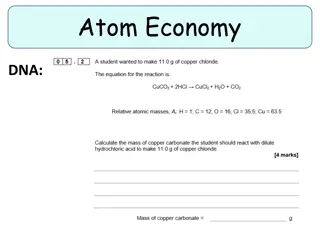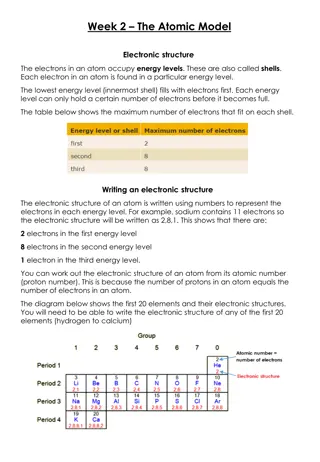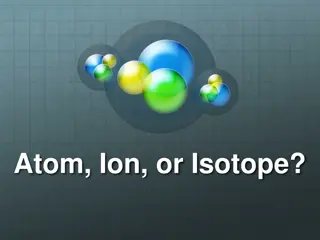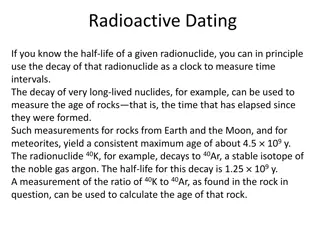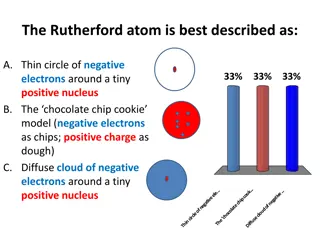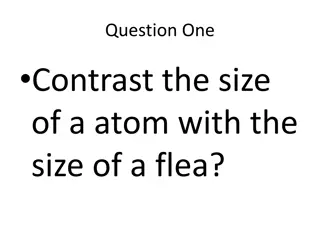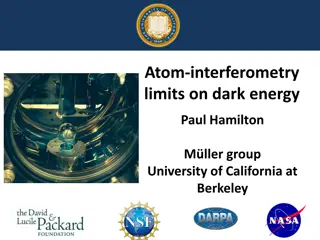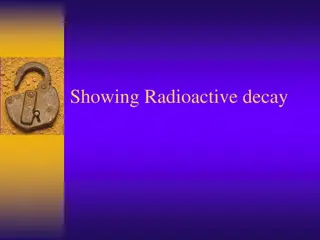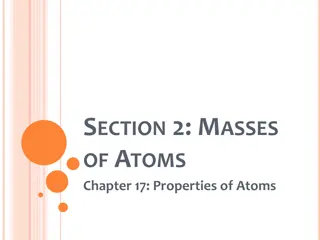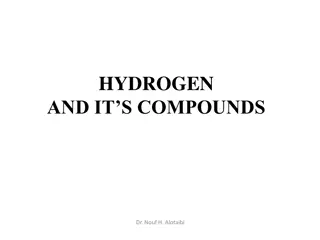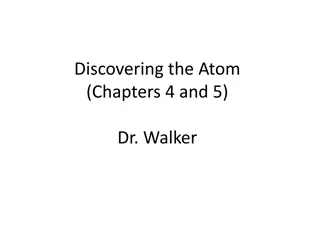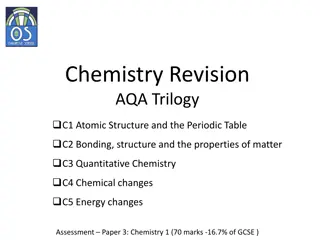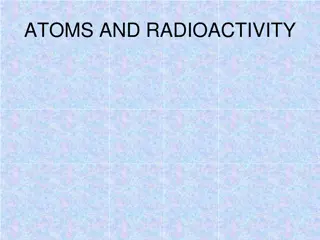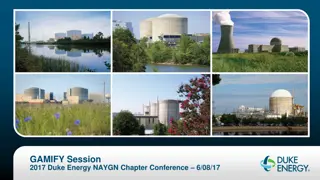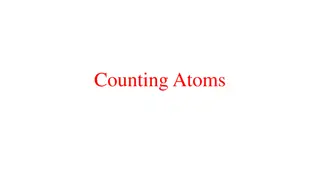Understanding Isotopes and The Atom
Isotopes are atoms with the same number of protons but different numbers of neutrons, leading to varying atomic weights. Explore how isotopes affect the average mass of elements and why chemical properties depend on atomic number, not weight. Learn about isotope symbols and discover the significance of radioactivity in unstable isotopes.
Download Presentation

Please find below an Image/Link to download the presentation.
The content on the website is provided AS IS for your information and personal use only. It may not be sold, licensed, or shared on other websites without obtaining consent from the author.If you encounter any issues during the download, it is possible that the publisher has removed the file from their server.
You are allowed to download the files provided on this website for personal or commercial use, subject to the condition that they are used lawfully. All files are the property of their respective owners.
The content on the website is provided AS IS for your information and personal use only. It may not be sold, licensed, or shared on other websites without obtaining consent from the author.
E N D
Presentation Transcript
The atom Atom: It is a unit of matter that is the smallest unit of an element, having all the characteristics of that element and consisting of a dense, central, positively charged nucleus surrounded by a system of electrons. -The nucleus is at the centre of the atom and contains the protons and neutrons. Protons and neutrons are collectively known as nucleons.
The sub-atomic particles: Protons are positively charged Neutrons don't have a charge Electrons are negatively charged Definition Of Atom -In a neutral atom: number of electrons = number of protons
Atomic number: is the number of protons Mass number of the atom = number of protons + number of neutrons (Atomic mass) (Atomic weight)
Isotopes Isotopes: Are atoms that contain the same number of protons (have the same atomic number) but different numbers of neutrons (have different atomic weight). not all atoms of the same element have identical masses as first suggested by Dalton, so these different kinds of atoms are isotopes.
-Most naturally occuring elements exist as mixture of isotopes. -Because of the existence of isotopes, the mass of a collection of atoms has an average value. Example: Mg24 , Mg 25 , Mg26 Which account for about 78.6, 10.11, 11.29% , respectively, of the total magnesium in nature. -Because of the mass distribution, the weighted average atomic weight of magnesium is 24.31 - The chemical properties of an element are determined by its atomic number, not its atomic weight. Consequently, all three isotopes of magnesium react identically.
-Isotope symbol can be represented by writing its mass number as a superscript and its atomic number as a subscript, both preceding the atomic symbol.
Radioactivity: Unstable atomic nuclei will spontaneously decompose (decay) to form nuclei with a higher stability. The decomposition process is called radioactivity. - The energy and particles which are released during the decomposition process are called radiation. When unstable nuclei decompose in nature, the process is referred to as natural radioactivity. - When the unstable nuclei are prepared in the laboratory, the decomposition is called induced radioactivity.
Modes of radioactive decay: -There are three major types of natural radioactivity: a) Alpha Radiation: -Alpha radiation consists of a stream of positively charged particles, called alpha particles, which have an atomic mass of 4 and a charge of +2 (a helium nucleus). -When an alpha particle is ejected from a nucleus, the mass number of the nucleus decreases by four units and the atomic number decreases by two units. For example: -The helium nucleus is the alpha particle.
b) Beta Radiation: -Beta radiation is a stream of electrons, called beta particles. When a beta particle is ejected, a neutron in the nucleus is converted to a proton, so the mass number of the nucleus is unchanged, but the atomic number increases by one unit. For example: -The electron is the beta particle.
c) Gamma Radiation: -Gamma rays are high-energy photons with a very short wavelength (0.0005 to 0.1 nm). The emission of gamma radiation results from an energy change within the atomic nucleus. Gamma emission changes neither the atomic number nor the atomic mass.
Alpha particles are stopped by a sheet of paper and cannot pass through unbroken skin Beta particles are stopped by an aluminium sheet Gamma rays are stopped by thick lead
Most radioisotopes used in biochemical studies are beta and/or gamma emitters. Example: C14 , P32 , S35 , and H3 are radioisotopes commonly used in biological research. All are emitters. Write the nuclear reactions by which they decay.
Half-life: (t1/2) The Half-life (t1/2) of a radioactive isotope is the time required for half of the original number of atoms to decay. -The relationship between t1/2 and is:
Example: Ca45 has a half-life of 163 days. Calculate: a) The decay constant ( ) in terms of day-1 and sec-1. b) The percent of the initial radioactivity remaining in a sample after 90 days. a) = 0.693 = 0.693 = 4.26x10-3 day -1 t1/2 163 0.693 = 4.92x10-8 sec -1 163x24x60x60
b)The percent of the initial radioactivity remaining in a sample after 90 days. b) 2.3 log N0 = t N Let N0= 100% 2.3 log 100 = (4.26x10-3 )(90) 0.3834 N Log100 = 0.3834= 0.167 N 2.3 Log 100 log N = 0.167 Log N = 2.000 0.167 = 1.83 N = 68.1%
The curie:(Ci) The curie or Ci is the standard unit of radioactive decay It describes the rate at which a certain radioactive substance decay DPM ( decay per min) DPM = - dN/dt = N The negative sign indicates that the number of radioactive atoms decreases with time 1 Ci = 2.22x106 DPM


